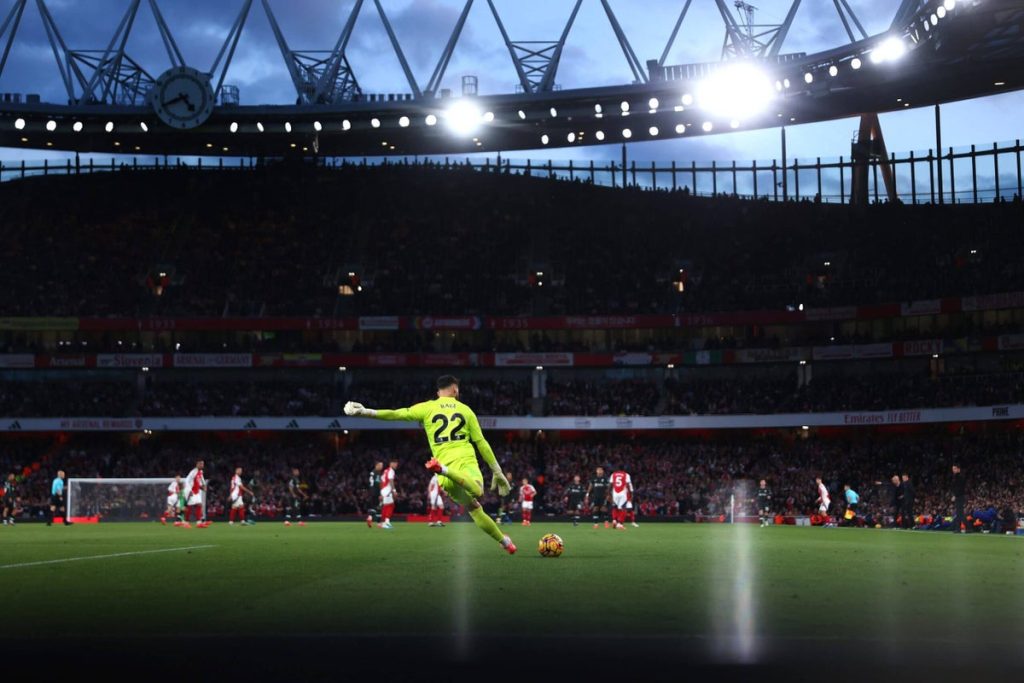The evolving game of football has witnessed several shifts, with the pronounced death of the long-ball tactic being one of them. As tactics evolved, playing from the back became the standard procedure, and direct teams became the outlier. This saw the rise of the high press strategy, followed by attempts to lure the press to tap into the spaces left by the opposition. During this period, the general approach was to play shorter passes from the back, reducing the habit of goalkeepers launching long balls far up the pitch. Instead, goalkeepers began to play a significant role in their team’s build-up phase, marking a decline of the long ball, especially in premier leagues.
In England’s top flight, goalkeepers started engaging in fewer long balls. From the beginning of the 2018-19 Premier League season, goalkeeper passes played long—defined as balls traveling at least 32m—saw a consistent drop, decreasing from 69 per cent to under half within a span of six years. This shift required goalkeepers to develop a different skill set. The ability to handle the ball technically became imperative, leading to emphasis on goalkeepers who can operate efficiently with their feet under pressure.
An increase in technical ability among goalkeepers and rise in aggressive pressing resulted in teams maximizing long passes to exploit upfield spaces. Premier League Club Manchester City leveraged these tactics when they faced Brentford, which saw their goalkeeper Ederson targeting long passes to striker Erling Haaland to capitalize on the spaces created by Brentford’s defenders. “When you isolate Haaland against a central defender, with the quality that we have with Ederson and Stefan Ortega, it’s a weapon that we have to exploit,” said Pep Guardiola, Manchester City’s manager.
Guardiola’s counterpart at Manchester United, Erik ten Hag, attempted a similar strategy, with goalkeeper Andre Onana trying to find Diogo Dalot’s runs behind the defense with long balls. While this did not result in any direct goals, it represents an ongoing trend in using goalkeepers to initiate attacking play. Liverpool similarly used long balls from goalkeepers Allisson and Kelleher to initiate passing patterns down their right wing with Mohamed Salah as a direct outlet.
The effective execution of such tactics requires more than just goalkeepers launching unplanned kicks. It involves devising specific routines that offer the maximum chances of scoring a goal. The same strategy can be seen at Arsenal where goalkeeper David Raya targets long passes towards Kai Havertz, enabling the team to capitalize on second-ball opportunities.
In recent years, football’s evolution has transformed long-ball tactics into a strategic move for attacking and advancing up the field. With the growing emphasis on build-up play, ‘keepers with technical skills are favored. This has led to aggressive pressing and higher defensive lines. While goalkeepers’ long balls are numerically declining, they’re tactically more crucial than before, providing teams with a tactical tool to bypass the press and exploit the spaces created.


